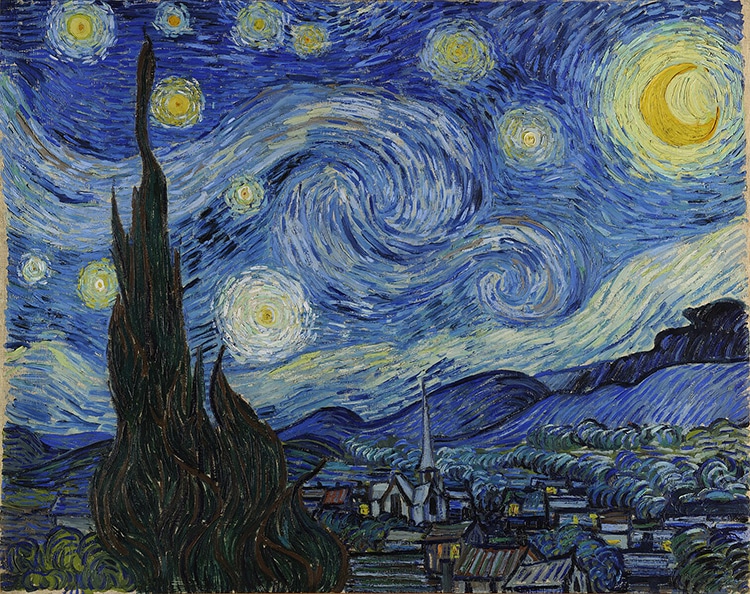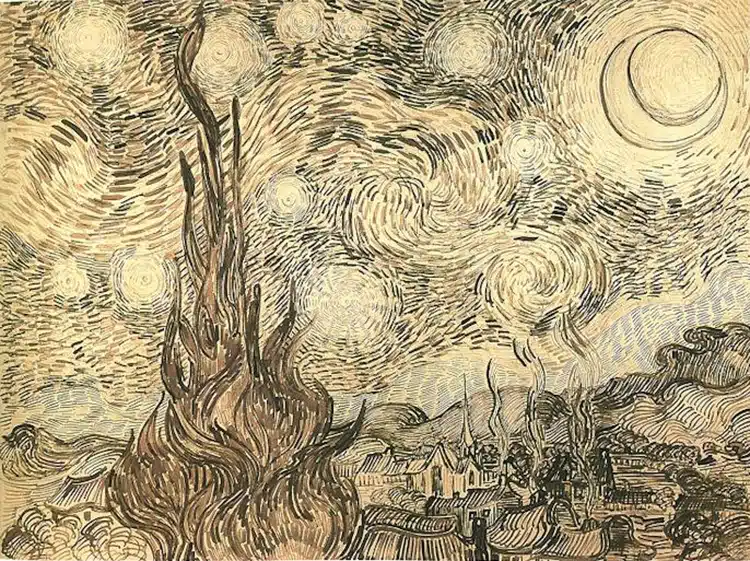(Photo:Wikimedia Commons, Public domain)
Vincentvan Goghis arguably modern history’s most well-known artist.
Fromcutting off his earto painting with swirling visible brushstrokes,Van Goghwas surprising in many ways.
Hisartistic foraysevolved over time as he produced well over1,500 works.

The legendary painting. (Photo:Wikimedia Commons, Public domain)
His most famous work isTheStarry Night, which features a twirling night sky in vivid brushstrokes above cypress trees.
This night sky has long fascinated art lovers, but it has recently impressed atmospheric scientists too.
In anew paper, researchers announced that the painting’s sky surprisingly reflects a deep understanding of atmospheric physics.

The Starry Night, and 1898 sketch. (Photo:Wikimedia Commons, Public domain)
The scale of the paint strokes played a crucial role, paper author Yongxiang Huangsaid in a statement.
The pattern of spirals mimicsKolmogorovs law, which describes the fluid dynamics of how turbulence dissipates.
By comparing the colors and lightness of the brushstrokes, they also confirmed that they reflect Batchelors scaling.
This is another measurement of dissipation.
So how did Van Gogh manage to paint atmospheric physics?
It reveals a deep and intuitive understanding of natural phenomena, Huang noted.
The Starry Night, and 1898 sketch.
Get To Know the Famous Sculptor of The Thinker